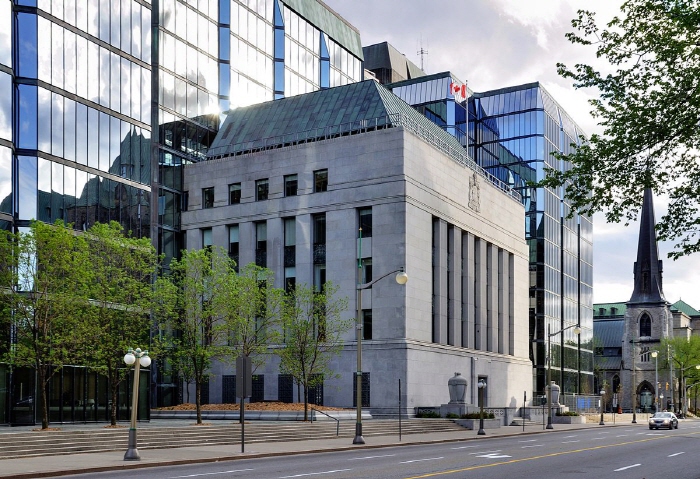Bank of Canada governor Stephen Poloz spoke in Ottawa this morning on the divergence between U.S. monetary policy and that in the rest of the world, including Canada.
The governor emphasized that the divergence in interest rates reflects a divergence in economic fundamentals. While declines in commodity prices are negative overall for Canada, they are a net positive for the United States. The currency movements that have resulted from this divergence helps ease the adjustment process by spreading demand from the U.S. (and other commodity importers) to commodity exporters such as Canada.
At the same time, the governor noted that both regional and sectoral adjustment in Canada is still ongoing, stating: "The economy's adjustment process can be difficult and painful for individuals, and there are policies that can help buffer those effects, but the adjustments must eventually happen." Policies that can help the process are seen to include fiscal policy, as well as "...policies to make the labour market more flexible"
The governor also remarked that although policy rates are diverging between the U.S. and Canada, historically, longer-term rate movements have tended to be closely linked between the two countries. This is seen as creating a potential downside risk to the Canadian inflation outlook.
Poloz played it cool in what was a very closely watched speech. Many observers were expecting an indication that additional easing is forthcoming in light of the weak economic performance revealed in recent data. But, today's speech was effectively neutral in tone. Both dovish and hawkish statements were on offer, such as the downside risk to inflation from higher long-term yields balanced against the implication that measures other than monetary policy may be best placed to facilitate adjustment.
Falling commodity prices, a lower currency, and rising U.S. demand have set the stage for a rotation in the Canadian economy towards increased exports, and eventually stronger non-oil-related business investment. However, although the stage may have been set, the play itself will take time to finish.
"We still see a prolonged pause in policy rate movements as the most likely scenario for the Bank of Canada. The policy rate is expected to remain at 0.5% through late 2017, followed by a very gradual hiking cycle. That said, the recent data has been weak, and it is likely that fourth quarter GDP growth will have been around just 0.5% (q/q annualized). We will look to upcoming data, notably the Bank of Canada's Business Outlook Survey (to be released Monday) to inform us further on the rate outlook", says TD Economics.



 Kazakhstan Central Bank Holds Interest Rate at 18% as Inflation Pressures Persist
Kazakhstan Central Bank Holds Interest Rate at 18% as Inflation Pressures Persist  BOK Expected to Hold Rates at 2.50% as Housing and Currency Pressures Persist
BOK Expected to Hold Rates at 2.50% as Housing and Currency Pressures Persist  BOJ Signals Possible December Rate Hike as Yen Weakness Raises Inflation Risks
BOJ Signals Possible December Rate Hike as Yen Weakness Raises Inflation Risks  BOJ Seen Moving Toward December Rate Hike as Yen Slides
BOJ Seen Moving Toward December Rate Hike as Yen Slides  FxWirePro: Daily Commodity Tracker - 21st March, 2022
FxWirePro: Daily Commodity Tracker - 21st March, 2022  Singapore Maintains Steady Monetary Outlook as Positive Output Gap Persists into 2025
Singapore Maintains Steady Monetary Outlook as Positive Output Gap Persists into 2025  Brazil Central Bank Plans $2 Billion Dollar Auctions to Support FX Liquidity
Brazil Central Bank Plans $2 Billion Dollar Auctions to Support FX Liquidity  Gold Prices Fall Amid Rate Jitters; Copper Steady as China Stimulus Eyed
Gold Prices Fall Amid Rate Jitters; Copper Steady as China Stimulus Eyed  Japan’s Inflation Edges Higher in October as BOJ Faces Growing Pressure to Hike Rates
Japan’s Inflation Edges Higher in October as BOJ Faces Growing Pressure to Hike Rates  RBNZ Cuts Interest Rates Again as Inflation Cools and Recovery Remains Fragile
RBNZ Cuts Interest Rates Again as Inflation Cools and Recovery Remains Fragile 




























